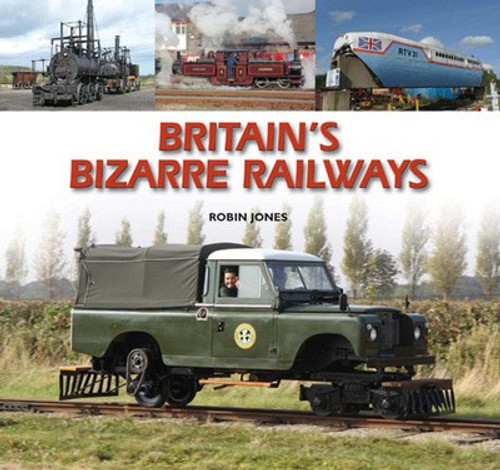Everyone has their own idea of what a railway is and there is no single defining image of the railway concept. Yet it has to be said that some railways are definitely stranger than others! Why have two rails when just one will do? Ireland has the utterly bizarre Listowel & Ballybunion Railway, where Siamese twin-like double locomotives run on a V-shaped monorail. Britain is also home to a working steam monorail, while one train from a 1960s bid to invent a high-speed hovertrain survives, as do both carriages from the countrys first dabbling in magnetic levitation. Steam, diesel and electric locomotives and horses are not the only form of traction: sail power has been used on British lines, and if your line is steep enough, why not let the train roll by itself from one end to another? Why have traction at all, when, as Brunel discovered, you can pull trains along at high speeds by a vacuum pipe in the middle of the tracks? Railways can be designed for any location, and used to tackle any task or terrain, no matter how difficult or improbable. For example, the wartime railways on the tiny Bristol Channel seagull sanctuary of Steep Holm, the worlds smallest public railway in Norfolk, a secret system serving Britains nuclear bunker city beneath Wiltshire, the countrys own prison railway where Borstal boys pushed wagonloads of mud, the numerous lines built to collect potatoes from the Lincolnshire fens, and Bristols forgotten funicular line, to name but some. And if you think Brunel was over the top with his broad gauge, what about the man who has a garden railway where the locomotive is too big to run on any modern British line? Discover these and many, many more in Britains Bizarre Railways, a book which opens many new doors into the understanding and appreciation of the concept of railways however insane! A graduate of the University of Central England, Robin Jones, founding editor of Heritage Railway magazine, was a news editor and chief investigative reporter at the Birmingham Evening Mail, and over the years has produced several books and special publications, along with historical features for numerous other newspapers and periodicals. He has been interested in railways from a very early age, when his elder brother Stewart took him trainspotting at Widney Manor station in Solihull at the age of four, at the end of the British Railways steam age. Imprint: Halsgrove. ISBN 978 0 85704 022 0, hardback, 214mmx213mm, 144 pages






